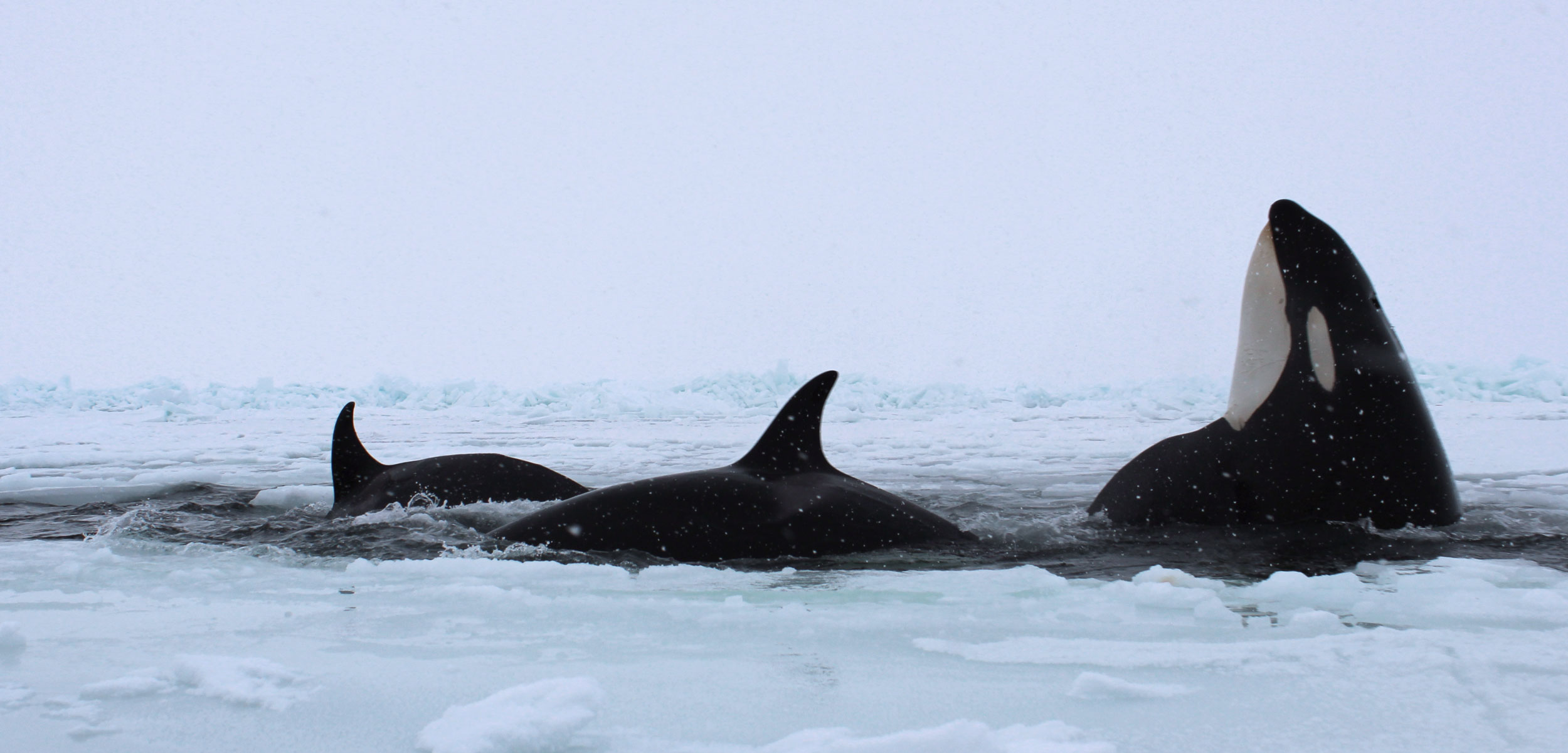Warming Seas Driving Orcas Into The Arctic, Where They Then Die, Trapped By Ice

In February 2016, hunters from Sanikiluaq, Nunavut spotted two killer whales prowling around a group of beluga whales in southeast Hudson Bay. It was an unusual sight for the time of year—killer whales don’t usually show up there until the summer, and are rare even then. In June, residents of the Inuit community spotted two other killer whales. By July, all four killer whales were dead. Trapped in the bay by thick sea ice, they starved to death.
Hudson Bay is a geographically complex inland sea with just two entrances—or exits—both at the north. Most years, the bay freezes over completely from mid-November until mid-July. Killer whales are typically found in the open ocean, but in recent years they have been venturing into the bay during the ice-free summer in search of prey such as belugas or narwhals. As the ice forms across the bay’s entrances in the fall, the only escape for the whales is to swim north. But this goes against their normal instincts, says Steve Ferguson, an evolutionary ecologist from the University of Manitoba. In the open ocean, killer whales would head south, where there is typically less ice. The result is that the killer whales find themselves trapped long into the winter, and, soon after, begin to starve.
Around the world, and especially in the Arctic, changing environmental conditions are offering up new habitats to animals willing to venture into the unknown. These killer whales may have been locals from the northeastern Canadian Arctic that were exploring Hudson Bay for the first time, or newcomers that moved into the region from afar—scientists aren’t sure. Either way, the lack of sea ice in the bay—which is setting in later, and over a smaller area, than in previous decades—was the fake floor hiding a deadly trap.
In fact, these four dead whales are just the latest in a rising tally. In 2011, a killer whale was found frozen in ice in the north of the bay. In 2013, an estimated 17 killer whales were seen swimming in the frigid water, their movements tightly constrained by the drifting pack ice. Most, if not all, of these whales are thought to have died. As far as scientists know, in the Arctic, more killer whales have died in the ice over the past decade than have suffered such a fate over the past century.
EDIT
https://www.hakaimagazine.com/news/killer-whales-are-expanding-into-the-arctic-then-dying-as-the-ice-sets-in/
